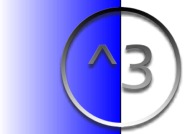The largest SLCD that Wired Bliss makes is a number 4. Each cam manufacturer has a definition of how large a "#4" sized cam actually is, but generally it means that the largest crack that it would fit in is 4 inches wide.
Our task is to design a device that fits in cracks 5 inches and larger, that also meets all the saftey, price and weight requirements listed below.
Note that nowhere have we
stated that this device has to be an SLDC. In fact Wired Bliss has
actually expressed a desire for a brand new anchor design that would, in Gene
Hacker's own words, "set the industry on fire! ![]() "
In our initial design, we tackled that challenge.
"
In our initial design, we tackled that challenge.
Here are the criteria that the client has set for this device...
Requirements:
|
 |
With these requirments in
mind, we pursue a solution using our own criteria. As the old Engineering
adage goe "Keep It Simple Stupid!![]() " (KISS)
" (KISS)
Design Philosophy
|
 |
This is our schedule for the Spring 2001 semester, with important dates indicated.

